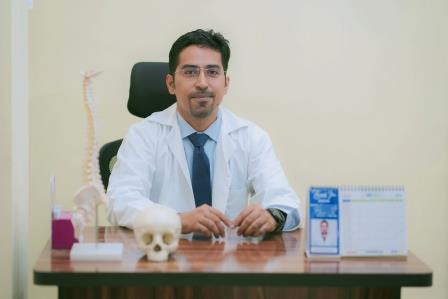Cerebral Venous Thrombosis (CVT) is a rare but serious medical condition where blood clots form in the veins that drain blood from the brain. One of the evolving treatments for severe cases involves a surgical procedure known as decompressive craniectomy. Let’s delve into this life-saving intervention in a language that’s easy to understand.
Understanding Cerebral Venous Thrombosis:
CVT occurs when a blood clot obstructs the flow of blood in the cerebral veins, leading to increased pressure inside the brain. This can result in a variety of symptoms such as severe headaches, seizures, and even loss of consciousness.
Decompressive Craniectomy Explained:
Decompressive craniectomy is a surgical procedure designed to alleviate pressure inside the skull. In the context of CVT, when conventional treatments like anticoagulant medications may not be sufficient, this surgery becomes a viable option.
Here’s a breakdown of the procedure:
1. **Incision and Removal of Skull Portion:**
– Surgeons make an incision in the scalp.
– A portion of the skull is removed temporarily to provide the brain with space to swell without causing harmful pressure.
2. **Dura Mater Opening:**
– The protective covering of the brain, called the dura mater, may be opened to allow further expansion.
3. **Swelling Space for the Brain:**
– With the skull removed, the brain has more room to swell without the harmful pressure that can occur within the confined space of the skull.
4. **Temporal Storage of Skull Portion:**
– The removed portion of the skull may be stored temporarily, often in the abdominal cavity or a special freezer.
5. **Recovery and Skull Replacement:**
– Once the brain swelling subsides, which may take days to weeks, the stored skull portion is reattached through another surgical procedure.
Benefits and Risks:
**Benefits:**
– Rapid reduction of intracranial pressure.
– Prevention of further brain damage.
– Improved blood flow to the brain.
**Risks:**
– Infection at the surgical site.
– Possibility of neurological deficits.
– Long-term recovery and rehabilitation.
Conclusion:
Decompressive craniectomy is a critical intervention in the treatment arsenal for severe cases of cerebral venous thrombosis. While it may pose risks, its potential benefits in saving lives and preventing irreversible brain damage make it a beacon of hope for those facing this challenging medical condition. Always consult with medical professionals to determine the most suitable treatment approach for individual cases.

Dr Sandeep Moolchandani
MBBS, MS (Chennai), MHA (Mumbai), PAHM (USA), FIPM (Kolkata), FISS (Pune), DrNB Neurosurgery (Delhi)
Consultant Neuro and Spine Surgeon, Shalby Multispecialty Hospital, Indore
Dr Sandeep Moolchandani is one of the best Neurosurgeon in Indore/ best Spine Surgeon in Indore/ best Neurologist in Indore, Madhya Pradesh (MP). He has a total clinical experience of 16 years. He has received his training from high volume Neurosurgical referral and tertiary care centers of North India. He has practiced in busy Neurosurgical departments of Maulana Azad Medical College & LNJP Hospital, New Delhi and MGM Medical & MY Hospital, Indore. He has expertise in all areas of Neurosurgery, including Spine Surgery, Neuroncology, Neurotrauma, Pediatric Neurosurgery and Vascular Neurosurgery. He has special interest and training in Endoscopic Spine Surgery (UBE and Transforaminal Endoscopy).